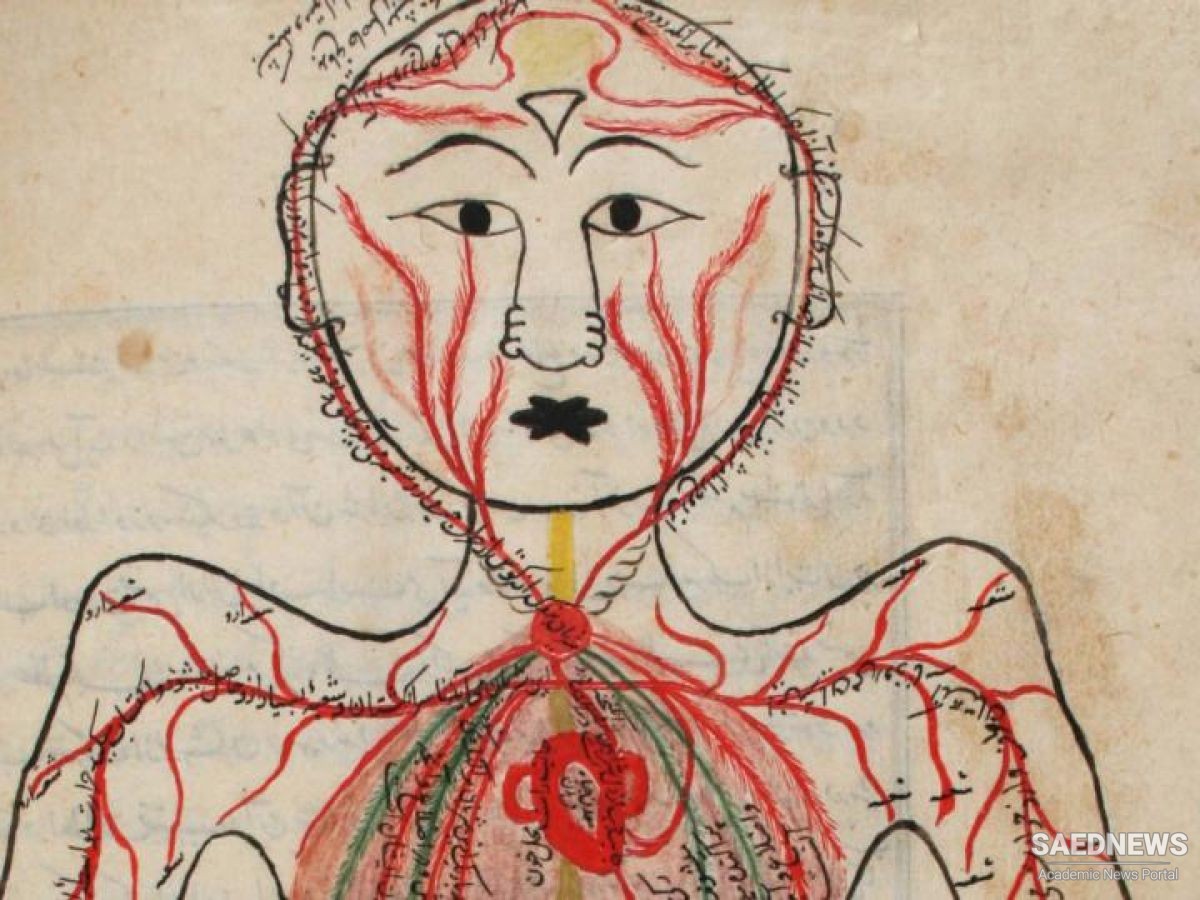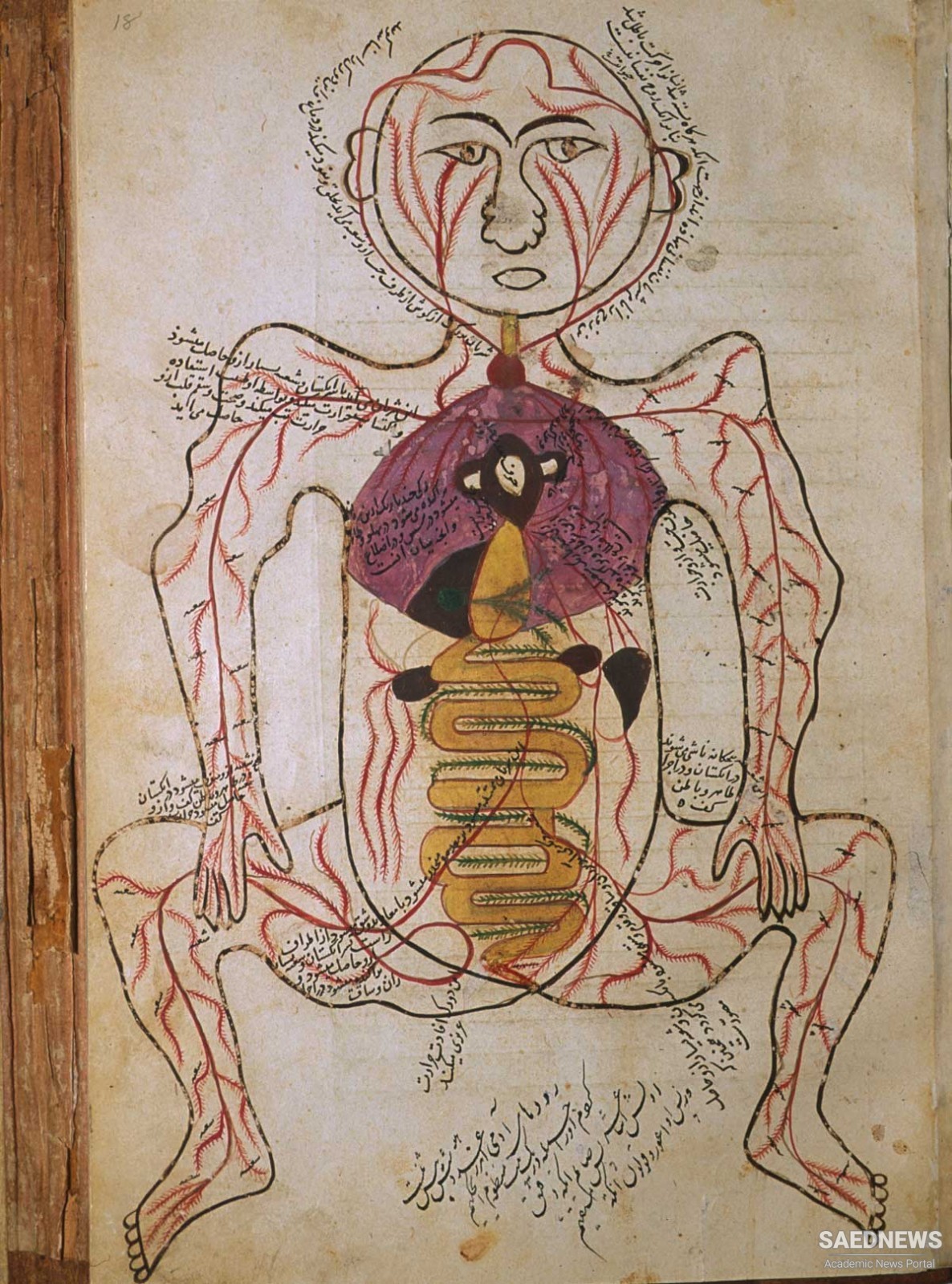Anatomy and physiology formed an inseparable unit in Islamic medicine. The study of the anatomy and physiology of the human body remained of the greatest interest to Sufis, theologians and philosophers as well as to physicians, and students of most other traditional disciplines acquired some knowledge of it. The greatest concern of Muslims was with the overall functioning of the body and the inter-relation of the organs within the total unity of the body. Islamic Law did not permit the dissection of the human body, although its prohibition has been debated by some of jurists over the ages. As a result, practically no dissections were carried out and Muslims relied heavily upon Galenic anatomy and physiology and its theory of the circulation of the blood and the spirits which are reflected clearly in such famous Islamic texts of anatomy as the Tashrih-i Mansuri by Mansur ibn Ilyas.
Mansur ibn Muhammad ibn Ahmad ibn Yusuf Ibn Ilyas was a late 14th century physician from Shiraz, Timurid Persia. Mansur was from a family of scholars and physicians active for several generations in the city of Shiraz. He dedicated both of his major medical writings, a general medical encyclopedia and a study of anatomy, to rulers of the Persian province of Fars.

The great advance came in the year 1396 when Mansur bin Muhammad bin Ahmad bin Tusuf bin Faqih Ilyas, who came from a Persian family of scholars and physicians working in the city of Shiraz, composed his Persian monograph on anatomy. No anatomical illustrations of the entire human body are preserved from the Islamic world before those which accompany the Persian treatise composed by him. His illustrated treatise, often called Mansur's Anatomy (Tashrih-i Mansur-i), was dedicated to the sultan Ziya‟ al-Din Pir Muhammad Bahadur, in all likelihood referring to Pir Muhammad ibn „Umar ibn Timur, the ruler of the Persian province of Fars from 1394 to 1409 (797-811 H) and grandson of Timur, known to Europeans as Tamerlane. Persian surgeon Mansur ibn Ilyas produced sophisticated anatomical drawings tracing nerves, veins, arteries, muscles and complex organs like the heart and brain that aided him immensely in conducting effective operations. The fact that anatomical illustrations do not appear in any earlier works is due to another prohibition of Islam-that of the making of reproductions of the human figure. There is in St. Petersburg a manuscript entitled Kitab dar ‘Ilm-i-Tashrih, or „Book of Anatomy‟ by Isma‟il bin Husayn al-Jurjani. There is also a work in British Museum entitled Mukhtasar dar ‘Ilm-i-Tashrih or „Compendium of Anatomy‟ by Abu al-Majd al-Baydawi. This, which is the only known copy of the work, is incompleted and the date of its composition remains doubtful, but there are no illustrations. Mansur‟s book is divided up into a dedication, an introduction, five chapters and a conclusion.



 Abu Nasr Mansur ibn Ali ibn Iraq the Teacher of Al Biruni
Abu Nasr Mansur ibn Ali ibn Iraq the Teacher of Al Biruni














































